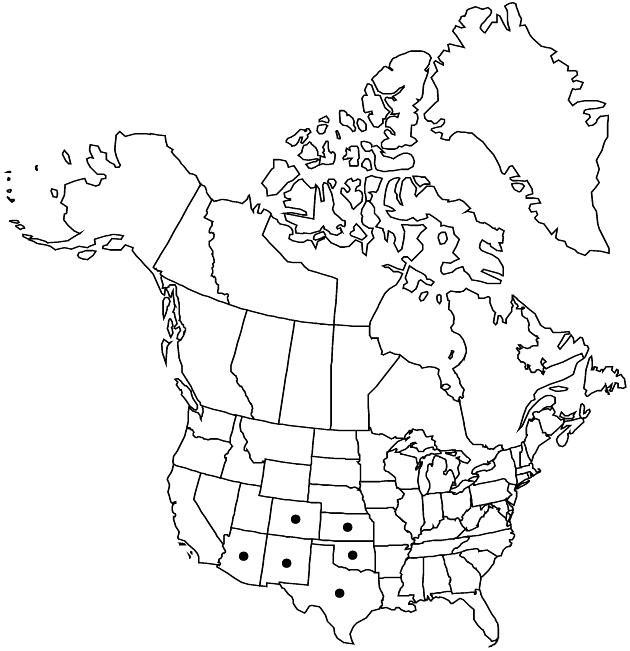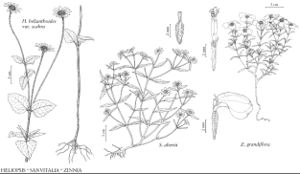Zinnia grandiflora
Trans. Amer. Philos. Soc., n. s. 7: 348. 1840.
Subshrubs, 8–22 cm (rounded or flat-topped). Stems greenish, much branched, strigillose. Leaf blades 1- or 3-nerved (some larger leaves), linear, 10–30 × 2–3 mm, strigose to scabrous. Peduncles to 11 mm. Involucres narrowly campanulate to cylindric, 5–8 × 5–8 mm. Phyllaries oblong, often becoming scarious, glabrous or appressed-hairy distally, apices obtuse, erose-ciliate (red-tipped). Paleae yellowish (often red-tipped), apices obtuse, erose. Ray florets 3–6; corollas bright yellow, laminae ovate to orbiculate, mostly 10–18 mm. Disc florets 18–24; corollas red or green, to 10 mm, lobes 1 mm. Cypselae 4–5 mm, 3-angled (ray) or angular or compressed (disc), ribbed, scabrellous; pappi 0 or of (1–)2(–4) unequal awns. 2n = 42.
Phenology: Flowering spring–fall.
Habitat: Dry, often slopes, mesas, shortgrass prairies, calcareous soils
Elevation: 600–2200 m
Distribution

Ariz., Colo., Kans., N.Mex., Okla., Tex., Mexico (Chihuahua, Coahuila, Sonora, Zacatecas).
Discussion
Selected References
None.
